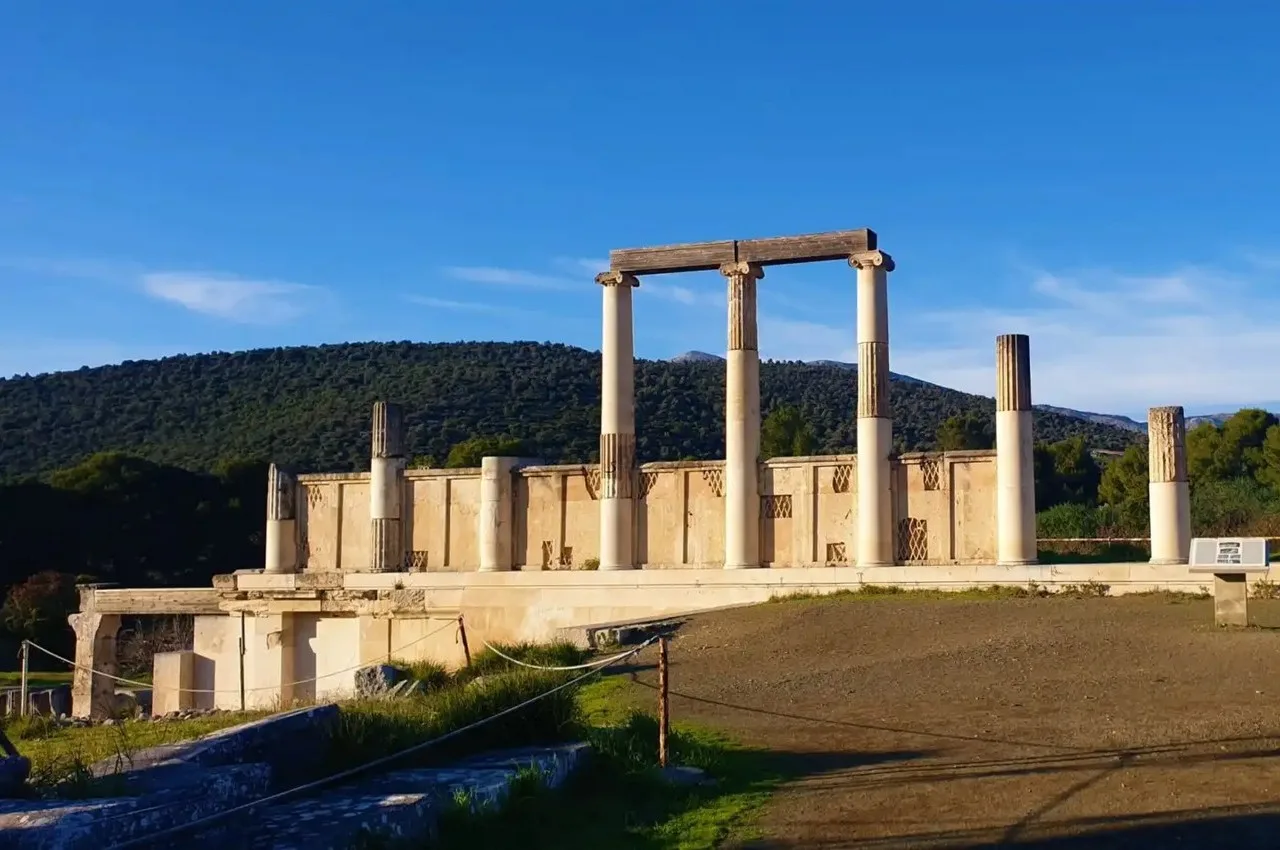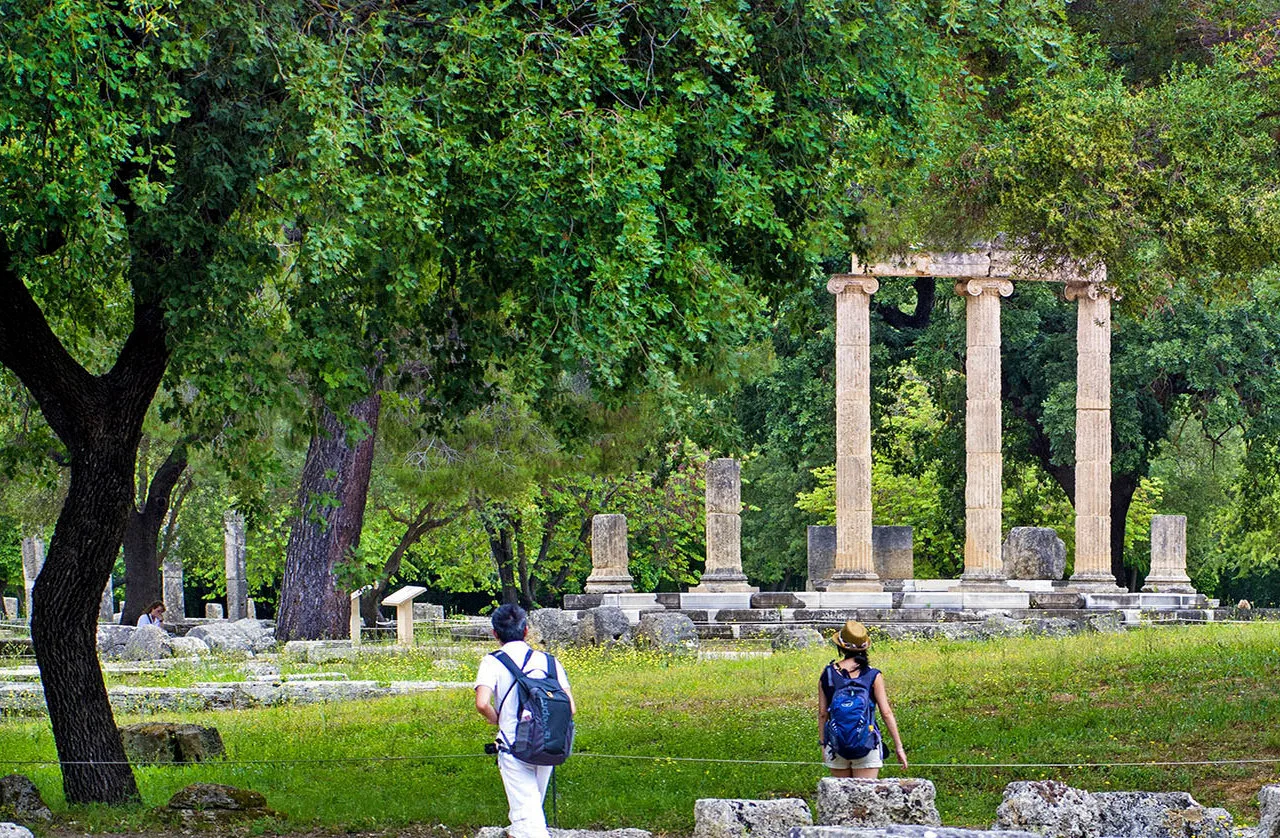Epidaurus Theater And Asklepieion
“The Mysterious Charm of the Theater of Epidaurus”
Ancient Epidaurus in Greece holds great significance as an archaeological site, particularly known for its Ancient Theatre renowned for its exceptional acoustics. Beyond its historical importance, this region also offers a wonderful destination for vacations. There are numerous charming villages and beaches located in close proximity to the ancient site, including the picturesque seaside village of Ancient Epidaurus. This quaint fishing village boasts a few small beaches, cozy fish taverns, and inviting studios for visitors to enjoy. Furthermore, exploring this area can be enhanced by embarking on road trips to neighboring destinations like Nafplion, Mycenae, and Porto Heli.
The Historical Significance of Epidaurus Sanctuary
When people hear the word Epidaurus, they often think of the town’s Ancient Theatre, built around 340-330 B.C. This renowned monument is included in UNESCO’s World Heritage Site list as part of the Sanctuary of Asclepius, the ancient Greek god of medicine. The theatrical performances held in this theatre were enjoyed by the god’s patients while they were being treated at the healing center.
An Ancient Marvel Of Acoustic Design
The ancient Greeks were skilled in creating impressive acoustics, building numerous significant theater venues without modern amplification technology. They used a combination of design and construction materials to achieve perfect acoustics in these theaters. While many theaters had exceptional sound quality, some were better than others. The Theater at Epidaurus stands out as one of the most impressive ancient amphitheaters.
The Architectural Style of the Theater of Epidaurus
A Brief History Of The Design and Construction
The ancient theater of Epidaurus was built in the fourth century BC under the guidance of architect Polykleitos the Younger. It served as the blueprint for all amphitheaters that came after it, with its flawless acoustic properties. Legend has it that even the audience in the back row could hear every word spoken on stage with crystal clarity, long before the invention of microphones and loudspeakers.
Originally, the theater was a sacred sanctuary dedicated to Asclepius, the Greek god of medicine. For the next 800 years, it was used to host music and theater performances in honor of the deity. Additionally, on days without shows, people would seek treatment from the priests for their ailments at the theater.
The building suffered a lot of damage over the years from conflicts and harsh weather conditions. It had to be fixed many times. After political problems and earthquakes, the Epidaurus Theater stopped being used in 426 AD and sat abandoned for 1450 years. In 1881, the ancient structure was uncovered and gradually restored over the next 57 years before shows started up again in 1938. Today, the Epidaurus Theater is still in operation, 2400 years after it was originally constructed. It now features a range of performances, including the yearly Epidaurus Festival.
The Epidaurus Festival, dating back to 1955, is one of Europe’s oldest performing arts festivals and a key cultural event in Greece. The fact that the ancient theater still stands and is in use today is a testament to the remarkable foresight in acoustical design. The lessons in acoustics from the Theater at Epidaurus remain relevant and influential after thousands of years.
The Stunning Works Of Art: Why Were Greek Amphitheater Acoustics So Good?
Theater played a significant role in ancient Greek society, and it would have been unacceptable for the large crowds in attendance to not hear the actors’ voices clearly. Greek amphitheaters had excellent acoustics out of necessity. The Theater at Epidaurus is exceptional in both its aesthetics and acoustics. What characteristics of a theater constructed thousands of years ago contribute to its enduring acoustics, and what lessons can we take from them?
Many researchers and sound specialists have pondered over the superior acoustics of the architectural marvel known as the Theater at Epidaurus. While their theories shed some light on the matter, it wasn’t until the twenty-first century that the full picture began to emerge. Let’s delve into what makes this historic venue stand out among concert and theater halls worldwide.
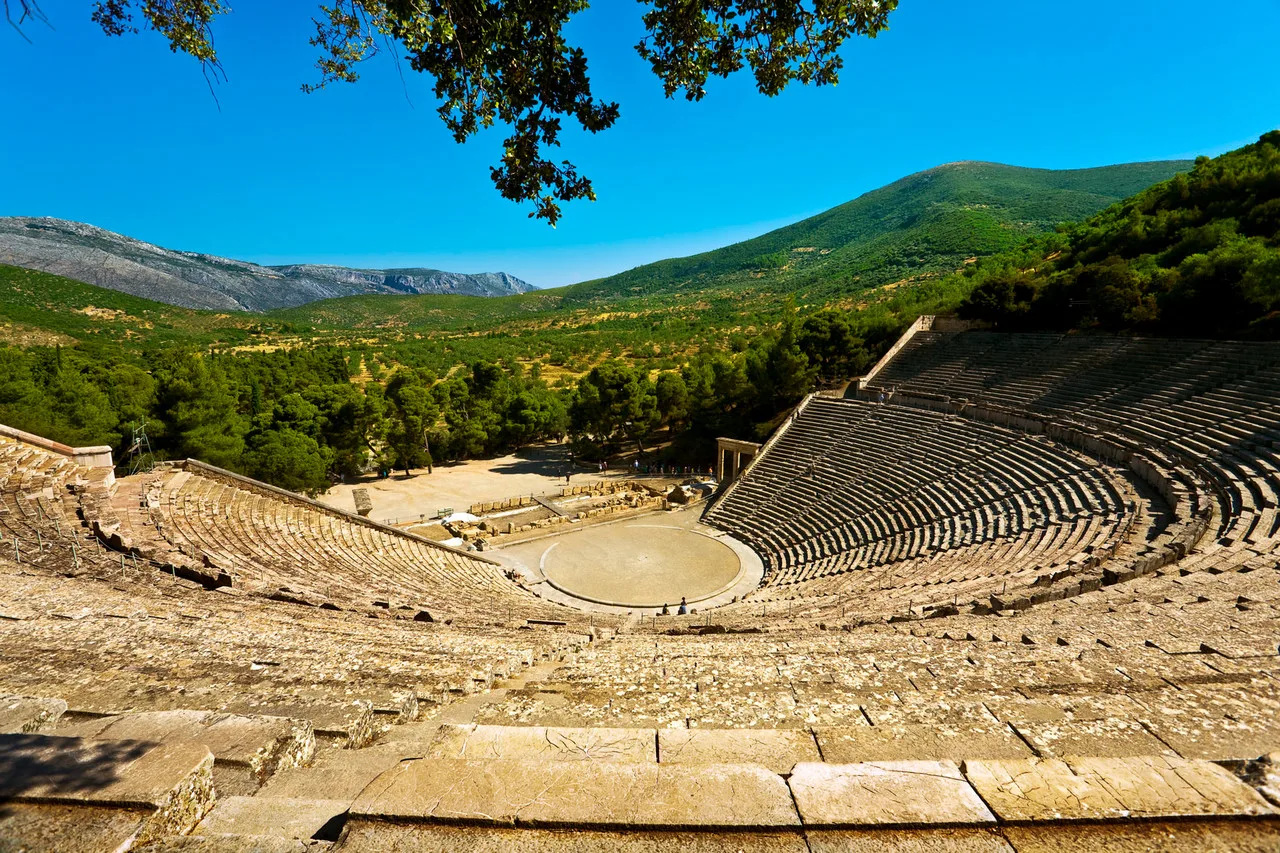
The Cult and Myths Surrounding the theater of Epidaurus
The Location
The Epidaurus theater’s incredible acoustics have long been attributed to its unique location on the west side of Cynortion Mountain. The shape and specific slope of the theater, along with the winds that carried sound waves up through the seating area, were believed to be key factors in creating its enviable acoustic profile. While the location and 26-degree slope certainly contribute to the theater’s sound profile, comparisons with other theaters in similar locations have shown that there is more to the story than just where it is situated.
Symmetry
The Epidaurus theater’s strategic location allowed builders to create a symmetrical theater, contributing to the remarkable acoustics experienced there. This symmetry greatly influenced the exceptional sound quality, making it a top choice for optimal acoustics. While the ancient Greeks understood this concept well, later attempts to replicate the sound proved unsuccessful in capturing the flawless sound of the Theater at Epidaurus.
The Integration of Myths in the Mask’s Narrative
There is speculation among scholars that masks could have played a role in the impressive acoustics at Epidaurus. In ancient Greek theater, actors often wore masks to make their facial expressions more visible to audience members sitting far away. The masks also helped in projecting their voices, as advanced amplification technology was not yet invented for many more years. Some experts believe that the masks might have served as early sound amplification devices. While this theory holds some weight, studies have suggested that it is not the only factor contributing to the exceptional sound quality of the theater.
The Theater Through Ages: From Antiquity to Present
A Chronological Journey: Transformation and Preservation
The Theater at Epidaurus had superior sound quality due to the unique design of its 55 semi-circular limestone seating rows. These seats functioned as acoustic traps, enhancing the acoustics of the theater. A study conducted by the Georgia Institute of Technology in 2007 revealed that the design of the limestone seats acted as an acoustic filter, dampening lower tones in human voices and reducing background noise from the crowd. Additionally, the higher tones were reflected back to the audience, resulting in clear speech transmission.
We are able to perceive the full spectrum of the actors’ voices and music thanks to virtual pitch. This audio phenomenon, although complex, essentially involves our brains filling in missing frequencies when we hear a blend of harmonics at a specific pitch and frequency. The ancient Greeks probably didn’t understand the brain’s ability to fill in missing sounds or how to design a theater that took advantage of this phenomenon. However, it was this unique quality that made the acoustics of the Theater at Epidaurus stand out among ancient theaters.
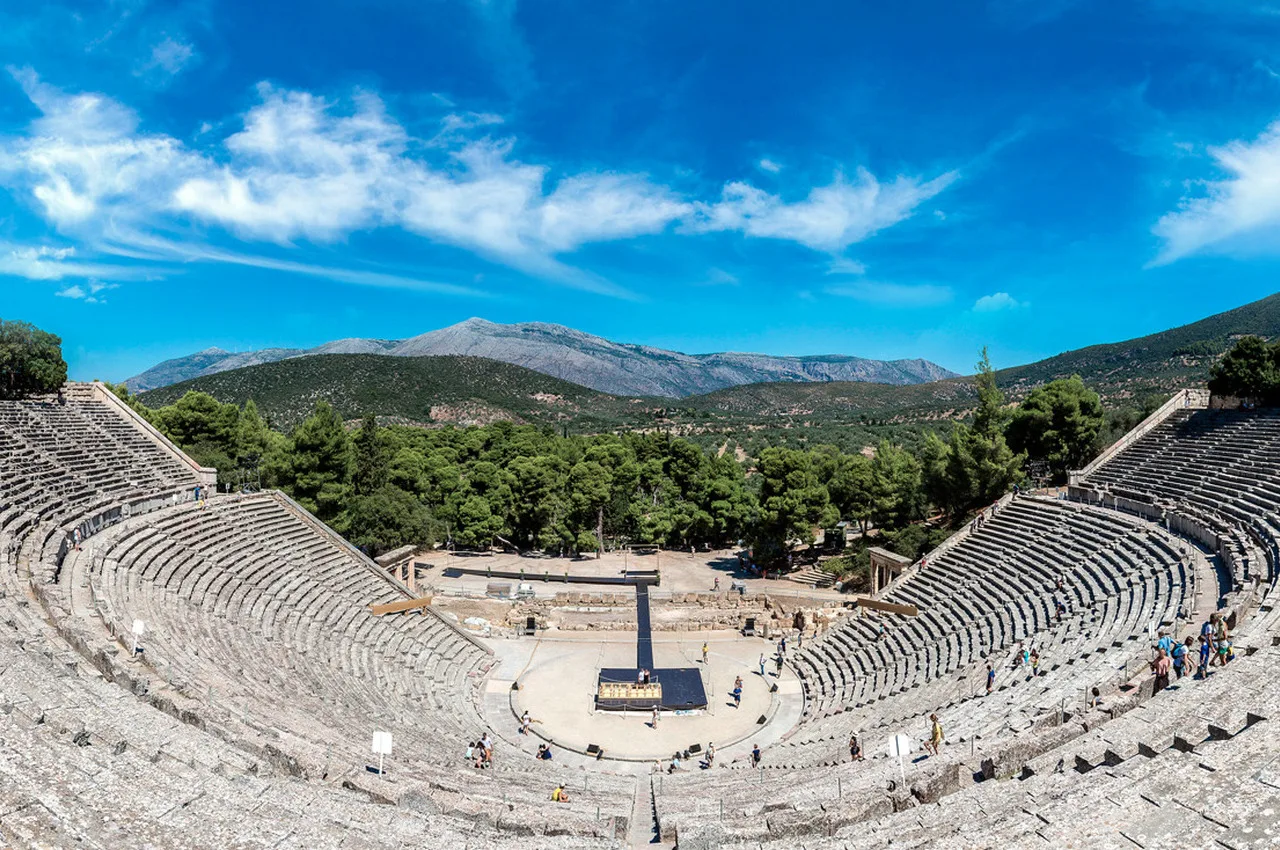
Epidaurus Theater in Modern Culture
Modern Conservation Efforts: Ensuring Eternity Use Of These Acoustic Principles Today
The Theater at Epidaurus had amazing acoustics that even the ancient Greeks couldn’t fully comprehend. It wasn’t until researchers from distant lands came along 2500 years later that the secret was revealed. Modern amphitheaters still follow the Greek design principles, using absorption and diffusion techniques to achieve optimal sound quality. We now have a deep understanding of how sound waves react to different materials, allowing us to construct music and performance spaces that offer top-notch acoustics.
Architectural acoustics today are the result of centuries of accumulated knowledge from our human past. In the modern era, we have access to thousands of years of information to guide us towards achieving ideal acoustics in any environment for any use. The principles learned from ancient structures like the Theater at Epidaurus inspire the layout of our spaces. These insights also shape the development of acoustical materials that enable us to enjoy music at its fullest volume without compromising sound clarity or causing disturbances to those nearby.
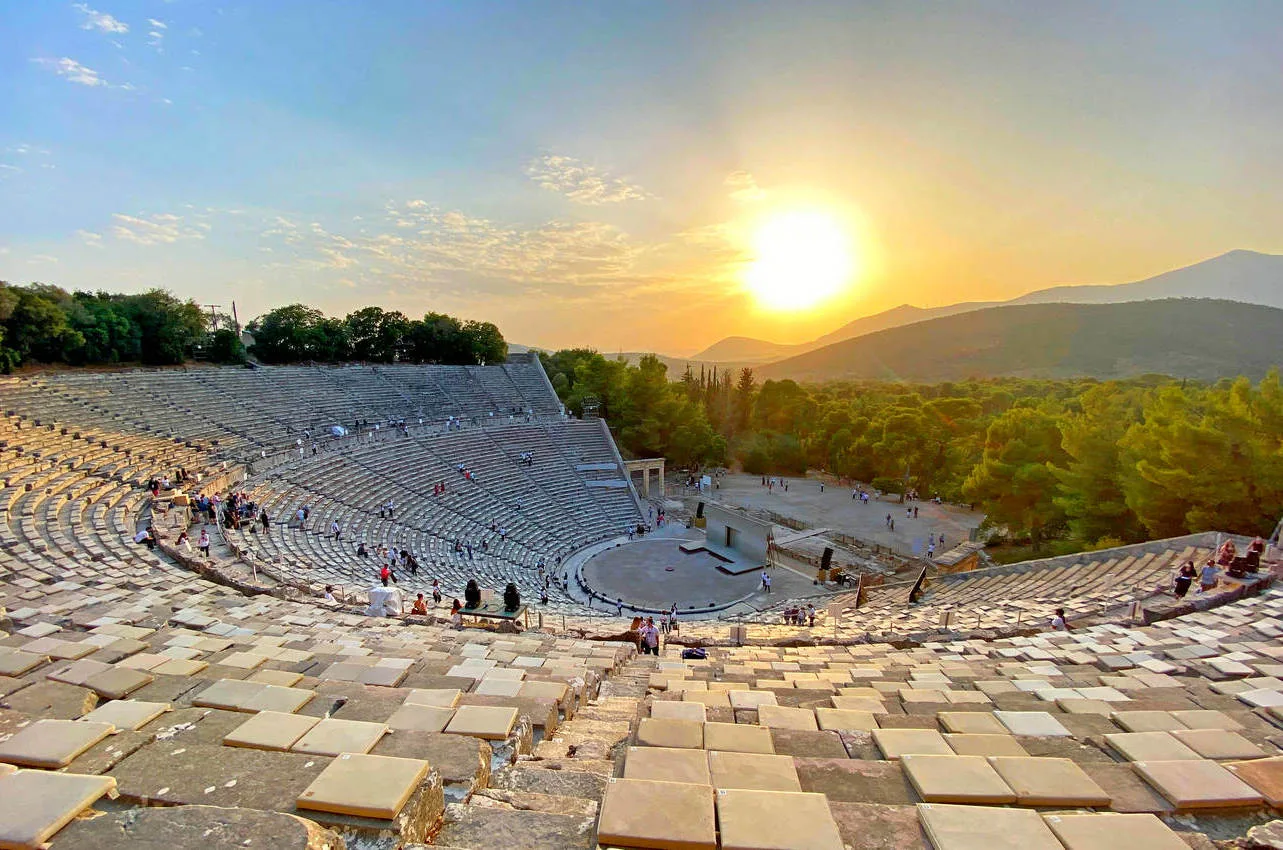
The Theater of Epidaurus Theater in Tourism
The theater in Epidaurus is a famous landmark that attracts tourists from around the world. It is known for its beauty, history, and ancient significance. Visitors come to admire the structure, learn about its past, and feel the powerful presence of this historic sanctuary. Educational programs and guided tours further enhance visitors’ knowledge and appreciation of this important site in ancient Greek culture.
The alluring Siren of the Saronic Gulf beckons us…Discover the land of Asclepius
Explore the realm of Asclepius, the ancient Greek god of healing.
Epidaurus, with its serene natural beauty shaped by its ancient and enigmatic past, encourages us to delve into the power of nature and our inner selves. The mountain peaks of Arachnaio, Koryfaio, and Tithio encircle the town, providing protection from the winds and creating a pleasantly temperate climate. The clear streams, picturesque scenery, and favorable weather conditions all contributed to making this area perfect for healing with divine influence. The Asklepieion at Epidaurus became renowned globally for its distinctive healing methods, establishing itself as the premier healing sanctuary of ancient times.
Legend has it that over 200 healing centers operated under Asklepieion’s approval across the Eastern Mediterranean region. The monuments of Asklepieion, aside from being revered as exemplary works of ancient Greek art, also serve as tangible evidence of medical practices in ancient times. These structures showcase the progression of medicine from a period when healing was thought to be solely reliant on divine intervention to the growth of a scientific approach grounded in accumulated knowledge and experience.
As time passes, things evolve.
Asklepios, the son of Apollo and Koronis and the grandson of King Malos of Epidaurus, had a cult established in the sixth century BC. He was revered as a deity who protected human health and happiness and became increasingly popular with worshippers. The original Sanctuary at Kynortion became crowded with visitors, leading to the founding of a new sanctuary in the plain about 1 km northwest of Kynortion Hill. This new site was believed to be the birthplace of Asklepios according to myth. The sanctuaries, one dedicated to Apollo Maleatas and the other to Asklepios, were collectively known as the Sanctuary of Apollo Maleatas and Asklepios.
In the fourth and third centuries BC, people built structures in both the mountain and plain sanctuaries. This included the Classical temple, the altar of Apollo, the Great Stoa, the priests’ residence, and the Temenos of the Muses in the mountain sanctuary. In the plain sanctuary, they constructed the Temple of Asklepios, the Abaton, the Tholos, the Theatre, the Stadium, the Banqueting Hall, and the hostel.
The Asklepion experienced a renaissance during Imperial times, especially in the latter part of the second century AD. Roman consul Antonine played a significant role in funding the restoration of existing structures and the creation of new ones. Renowned traveler Pausanias visited the sanctuary during this era, marveling at its beauty and providing detailed descriptions of its monuments. Excavations at Epidaurus commenced in 1881 under the leadership of Panagiotis Kavvadias, who dedicated his life to the site. In 1988, the Asklepios Sanctuary at Epidaurus was recognized as a UNESCO World Heritage Site.
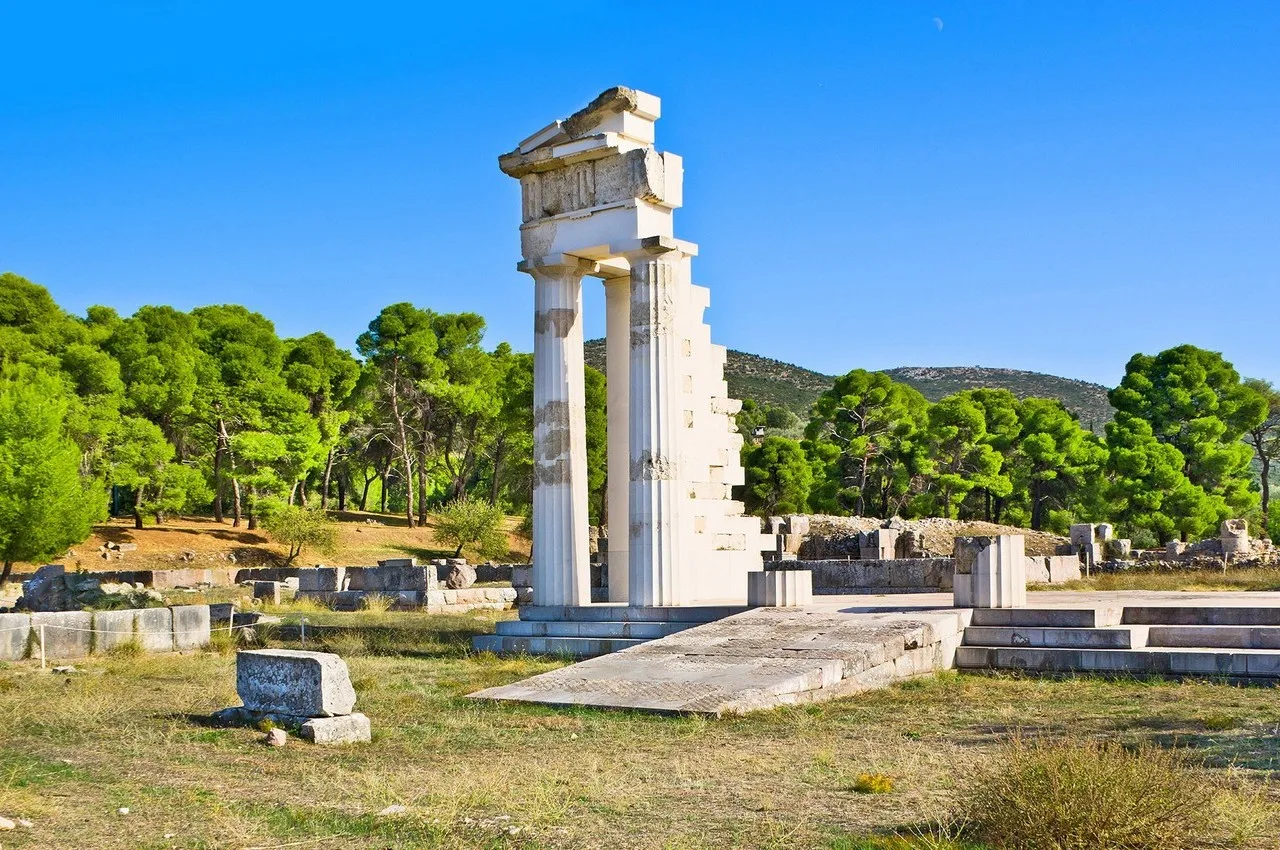
Asklepieion The Holistic health care
Archaeological findings confirm that Asklepieion provided holistic health care in ancient times, similar to what we now refer to as holistic health care. The treatments and therapies administered by the spiritual healers were highly advanced. Through years of studying nature, the human body, and the connection between mental well-being and physical health, a comprehensive healing system was established that was remarkably successful.
The imposing Asklepieion site has a confirmed history of an older sanctuary dedicated to a female fertility goddess. Later, both Apollo and Asklepios became worshipped as gods of healing. Asklepios, believed to have been born in Epidaurus, eventually took over divine responsibility for medical care. The priests’ accumulated experience, combined with the beneficial climate and natural surroundings of Argolis, led to successful medical treatments. This led to a large number of visitors seeking treatment from Greece and abroad.
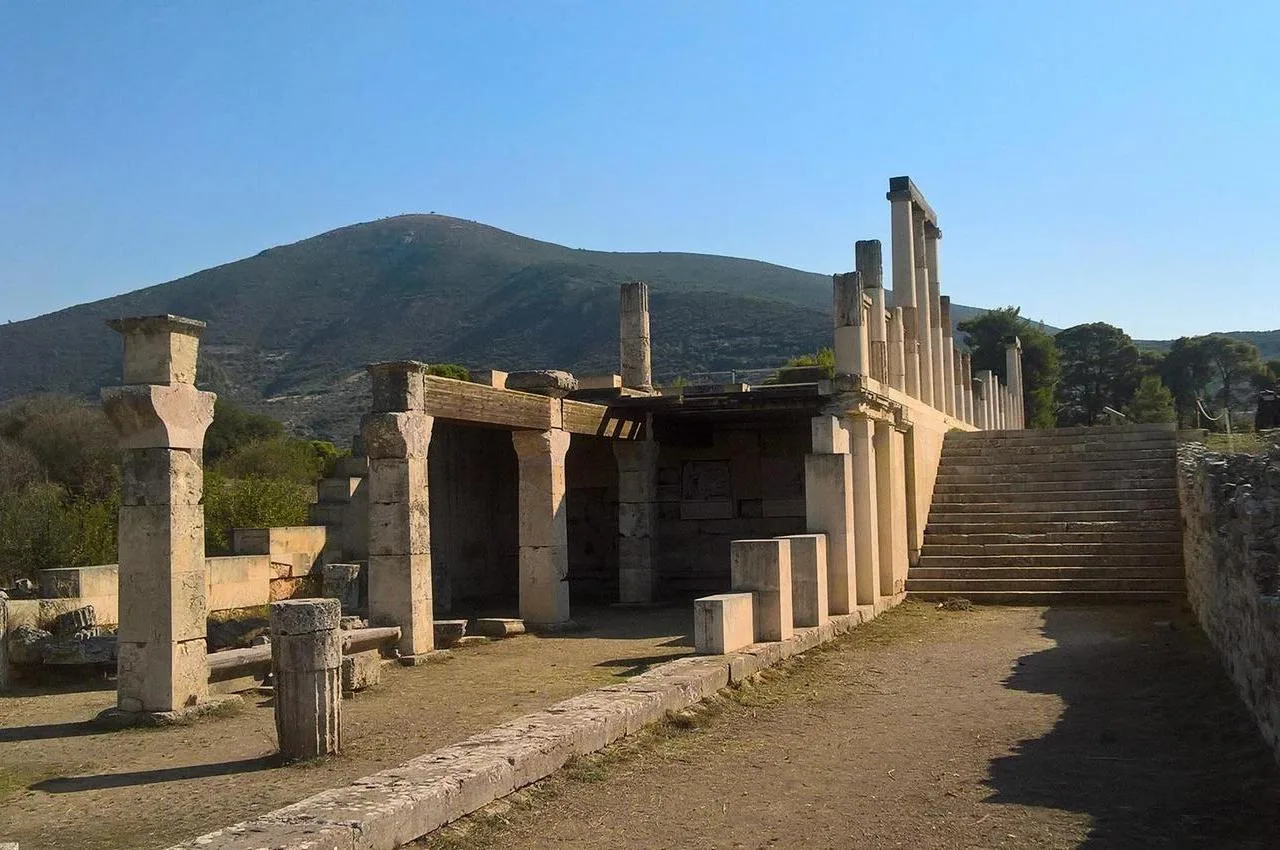
Healing the mind, body, and soul is the focus of therapeutic care
Every event at Epidaurus aimed to bring balance to the mind, body, and soul. The theater at Epidaurus, known for its incredible acoustics and harmonious design, provided a space where guests could immerse themselves in performances and temporarily forget their daily struggles. Music, theater, and philosophical readings all worked together to prepare the soul for complete healing of the body.
After being thoroughly cleaned and achieving a state of calmness and mental relaxation, the patient was guided to the primary treatment space known as the Abaton. This unique structure was a dome-shaped building with intricate passageways and labyrinthine corridors, creating an air of mystery and wonder. The design of the Asklepieion was truly extraordinary, even by today’s standards. The circular shape of the building symbolized a sense of protection and comfort, reminiscent of a mother’s embrace. The arrangement of the sanctuary was intended to help the patient center their thoughts and tap into their inner reserves of strength.
The initial preparation was followed by the main healing process known as enkoimesis, a gentle and non-invasive method that was highly effective. While asleep, the individual would dream of the god who would come to them in the inner sanctuary and provide the necessary healing. The mystic devotees of Asklepios guided the dream to ensure the best outcome for the patient. In 1883, 70 inscriptions known as iamata were discovered, showing evidence of successful treatments for various illnesses.
The tranquil setting of the Sanctuary of Asklepios at Epidaurus, shaped by its ancient and enigmatic past, beckons us to delve into the powers of nature and our own inner selves.

